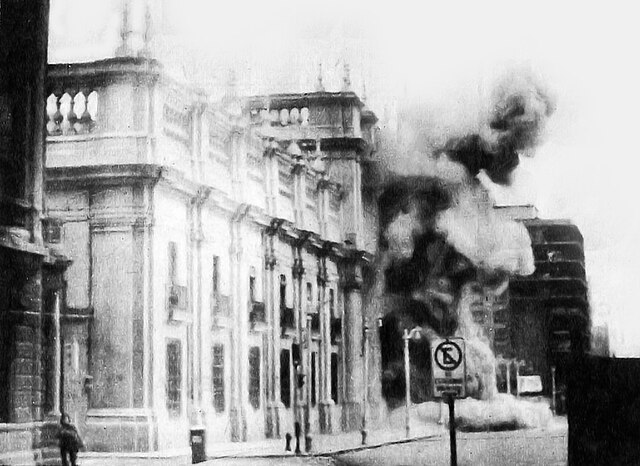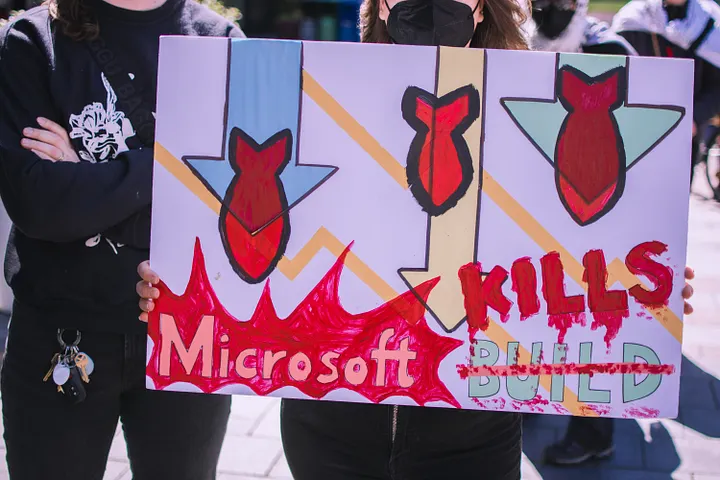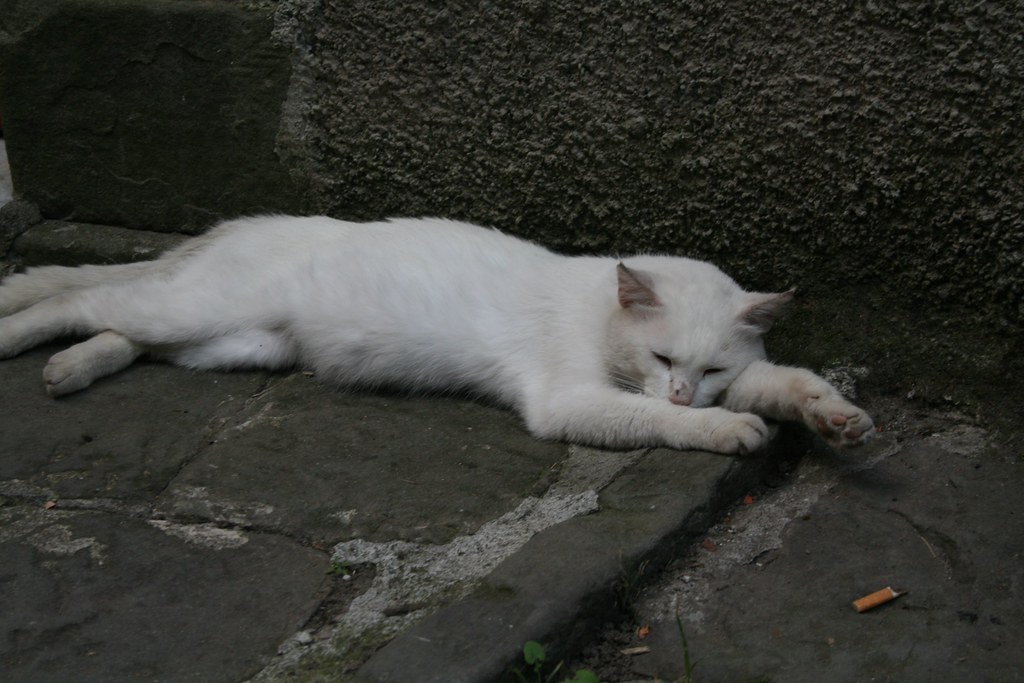As Norwegians head to vote in their national elections on 8 September, a topic that has occupied much space in recent news cycles has been the discovery that the country’s sovereign wealth fund has been investing increasing sums of money into Bet Shemesh Engines Ltd., an Israeli manufacturer of jet engine parts—used, to nobody’s surprise, in the genocide in Gaza. This fund (“the oil fund”, or Oljefondet in Norwegian) is made up of the taxes levied on the profits made by the Norwegian oil industry. It also happens to be the largest sovereign wealth fund in the world, worth close to €1.7 trillion today. Oljefondet’s investments into Bet Shemesh have taken place despite the fact that it has its own ethics council, to prevent precisely these sorts of investments from taking place. The ethics council is more than just for show: it has indeed pulled investment out of specific companies in the past, and even out of entire industries such as tobacco or coal. Despite this, the fund’s investments in Israel have increased by a factor of six over the past 20 years, clearly diverging with Norwegian public sentiment towards Israel. Moreover, the fact that this even saw the coverage that it did is likely due to the publicity generated by an open letter written by Francesca Albanese. The phrase mitt oljefond, mitt valg (“my oil fund, my choice”) has rapidly become a symbol of protest as Norwegians have taken to the streets to demand disinvestment from firms complicit in genocide.
These protests have been somewhat successful, and some degree of disinvestment has genuinely materialised. Retrospective analyses of this entire debacle have highlighted the toothlessness of the ethical council, pointing out that there is indeed no firm legal obligation to follow their advice, making the question of disinvestment a political rather than purely technocratic process. While true, this critique is limited in that it eschews any sort of structural analysis of the politics of investment, instead looking at each of these decisions as individual instances. It therefore fails to explain why this political process should have failed to disinvest from genocide, even given the general Norwegian aversion to business with Israel and why it continues to rule out complete disinvestment in Israel. More importantly, it also gives us no capacity to understand how we might prevent this sort of thing from happening in the future.
How should we characterise this “politics of investment” today? Investment itself—a tool that is patently necessary to keep capital’s motor running—has a diverse range of functions. It can help kickstart new production processes by engaging new workers or buying new machinery; it can help build, maintain and upgrade infrastructural stock; it can help by creating institutions like universities and trade schools, in order to upskill workers; it can even help with developing new processes of production through what we call “innovation”. None of this is intrinsically a bad thing and there is no reason to assume that the notion of investment will disappear when capitalism withers away.
On the other hand, given that we do live under capitalism, there are certain expectations underlying investment. The main one of these is that private actors who advance sums of money are rewarded by eventual returns on this sum. These returns can make their way to investors as dividend payouts, or, when investment simply represents partial ownership of the firm, the (notional) returns are an increase in the share price of the firm. And in theory, these returns come from faith in the firm’s ability to successfully produce and sell commodities at a profit. From the perspective of the investor, this means that all the tricks in the capitalist book are fair play: wage suppression and union busting, skimping on product quality, ignoring environmental regulation, lobbying politicians and so on.
This means that in a market economy, investors are driven solely by the profit motive as far as decision-making is concerned. Any other factors (such as emissions) have to be described in financial terms, and “priced in” by some capable authority. This has its upsides: the profitable production and sale of commodities implies that these are commodities that people want to purchase. For instance, investors push money into BYD, since BYD produces affordable electric cars and people want to buy electric cars. It also has profound negatives: the most pressing of which is that an economic model predicated on infinite commodity production and consumption is unfeasible on a rapidly heating planet. And in the end, it is important to note that our access to iPhones is entirely incidental to the goals of capitalists or their financiers, which remains profit-seeking. This is why, together with iPhones, we also get things like planned obsolescence, where electronic devices are produced to lose function over time.
The profit motive also obviously holds true for Oljefondet as a financier. In order to keep up with the rate of inflation, the laws of the market compel Oljefondet’s managers to invest “wisely”, to grow these investments as effectively as possible for the sake of the Norwegian people. This has (thus far) seemed to work out quite well, and Norway’s generally left-of-centre political culture has been able to act as a moderating force on these investments, making sure the most egregious investments are taken off the table. Why, then, is this moderating force now failing in face of a moral crisis as colossal as outright genocide?
In the years since the crisis of 2008, it has grown increasingly evident that global capitalism is in deep crisis. Investment avenues for commodity production have grown increasingly narrow, due to a near-global collapse in the rate of profit. To simplify a bit, the system has been chugging along in the past decades in large part due to the rapid, world-historical growth in the Chinese economy, enabled by innovative industrial policy, foreign direct investment, and readily available pools of labour. Some of the benefits of this have trickled upwards to Western firms, through their ability to coordinate complex chains of subcontractors, drawing profits through the increasingly innovative range of property rights regimes that this era has sparked. This has been particularly true for Big Tech firms, such as Apple (€33.17b of Oljefondet): designed in Cupertino, made in Shenzhen.
This marks a stark contrast to the more domestic side of Western capitalism, where economic coordination has grown increasingly anarchic under the maxims of the market. Countless hype-driven bubbles like generative artificial intelligence (Nvidia: €43b) and outright scams like cryptocurrency (Coinbase: €902m) mark avenues for get-rich-quick, pump-and-dump schemes. Existing social arrangements are torn apart as labour is pushed further into precarity by platforms capable of absorbing decades of losses, like Uber (€2b) and Doordash (€1b). And when all else fails, the rapidly widening realm of assetisation has helped create a wide store of perfectly viable avenues to strip-mine and turn tidy profits: from housing (Vonovia: €3.66b) to healthcare (UnitedHealth: €3.28b) to electricity (National Grid plc: €1.09b).
In keeping the world economy chugging along pretty happily, this combination of fixes has also kept investors like Oljefondet chugging along with it. Small wonder, then, that most of Oljefondet’s investments—three-fifths, to be precise—lie in the United States.
Times change. The rapid growth in Chinese competitiveness, not just in industrial production but also in the profit-absorbing parts of the supply chain, like product design and innovation, have made sustaining this drain increasingly difficult. China has rapidly grown to become a national microcosm of capitalism itself, dominating commodity production in countless fledgling industries, from electric vehicles to battery technology to solar power. It is unclear how the United States intends to undo this, tariffs or otherwise, since the fundamental problem is that the Western world has spent the past decades incrementally ceding responsibility for economic coordination to financial capital. Consequently, today, there is a colossal dearth of institutions capable of the meaningful, democratic planning that the production of social wealth and well-being requires. Contrast, for instance, how Chinese investment has led to massive expansions in green energy infrastructures, while billions of dollars of Western capital have instead been pumping into massive expansions in data centres, to prop up the artificial intelligence hype bubble.
Unfortunately, this investment does not stop at Silicon Valley’s infinite hare-brained schemes. In much of the West, a massive expansion of military capacities has become the call of the hour. In Europe, this “rearmament” is ostensibly due to fears of further Russian expansion beyond Ukraine; as in the United States, however, these investments are also motivated by the desire to defend national borders, bolster colonial outposts like Israel, police domestic dissent and, depending on whom you ask, prepare for an eventual war with China. Ambitious plans for expansions in green energy have fallen by the wayside, as whatever remains of Western industrial capacity is diverted bit by bit towards “defence”. This is the backdrop against which NATO countries have uniformly increased their defense spending to 5% of GDP, with even Germany abandoning its long-standing commitment to the Schuldenbremse in its renewed enthusiasm for remilitarisation.
The new titans of the military economy include fledgling arms manufacturers, like RTX (€2b) and Rheinmetall (€1.5b), surveillance/prediction firms like Palantir (€3.09b) and, of course, Big Tech firms. Prominent among these are Alphabet (€22.25b), Amazon (€23.19b) and Microsoft (€42.39b), each of which has very explicit tie-ups with the IDF, to whom they provide cloud services for logging phone calls made by Palestinian civilians in the West Bank, or for running the artificial “intelligence” systems that arbitrarily add Palestinian civilians to IDF kill-lists. These collaborations are no accident: for countries committing to (re)militarisation, very few countries are more valuable than Israel is. As has been pointed out ad nauseum, the immense utility of the IDF’s military and surveillance technology comes from their thorough subjugation of Palestinians as test subjects for the IDF’s advanced weaponry.
All of this marks a rather difficult situation for Oljefondet, who must strike the right balance between seeking profits, respecting geopolitical constraints, and being seen as trustworthy. This means curtailing investments on green energy, where profit margins are low; it means obeying American investment imperatives and, ultimately, it also means deterministically pumping money into firms that are too big to fail. And while directly investing in genocide is indeed a step too far for most Norwegians, these constraints ensure that that is effectively what is happening anyway.
Capitalism is a dirty business. Wage theft—the dirt that lies at its very core—can be broadly obscured, so long as (some) workers can identify their own short-term interests with those of the system. Now that this social arrangement is rapidly disappearing, we are witnessing a return to the naked, unmasked brutality of pre-war capitalism: a phase that began with the East India Company’s reign of terror in South Asia and ended with firms like IBM and Volkswagen aiding Nazi Germany in administering the concentration camps where more than six million Jews, and millions of Roma, Sinti, queer and disabled people were murdered, in the cold light of scientific industrial capitalism.
The outrage has worked and the protests have succeeded at getting the fund to withdraw from a handful of businesses involved in genocide. This includes Bet Shemesh, but also Caterpillar (previously €1.85b): the firm whose bulldozers have practically turned into a symbol for the Israeli destruction of Palestinian homes. This is an unqualified positive and a political change we should all be thankful for.
To prevent this from happening again, however, Norwegians need to honestly reckon with the reality of what market-driven investment means today, against the backdrop of an increasingly violent, militarised and exterminationist West. Adopting a politics of steadfastly continuing down the profit-maximisation path and tackling only the most egregious ethical pitfalls when they do arise is going to prove to be a Faustian bargain, that will inevitably push people to internalise a certain level of cynicism and disregard for human life. All of this is fertile ground for the far-right, who thrive off the amorality of their opposition.
In the end, the only way out is through. While many Norwegians have deeply internalised the idea that they are a small country incapable of effecting any change anywhere, this is far from true when we look at Oljefondent: it is a hefty sum of money, capable of bringing about vast economic and social transformations if harnessed correctly. The hard reality, however, is that this requires at least something of a break with one of capital’s core precepts—accumulate, accumulate! That is Moses and the prophets!—and a transition to a mode of societal coordination that prioritises sustainability, well-being and individual freedom, over the generation of endless profits for the bourgeoisie.




